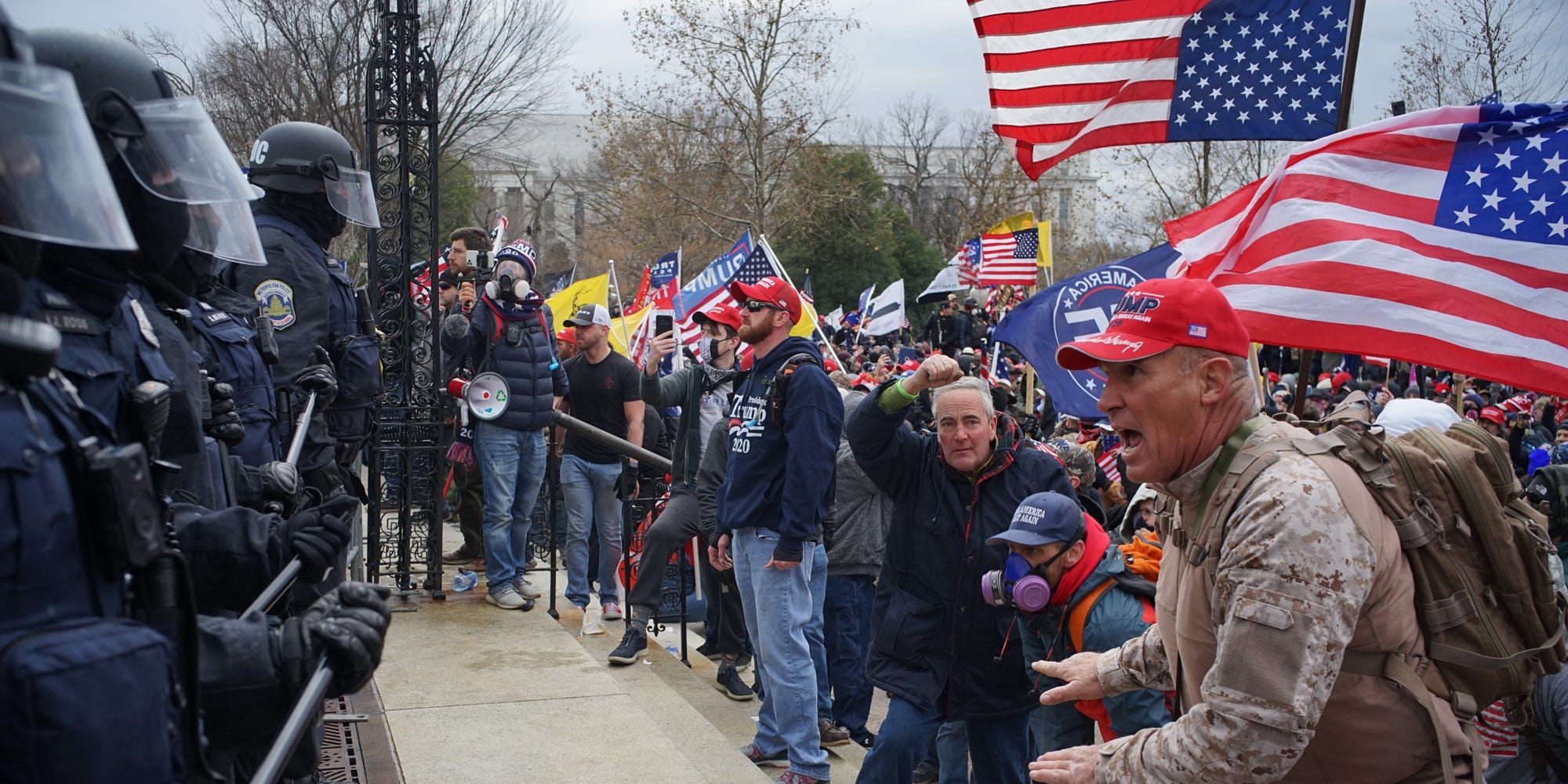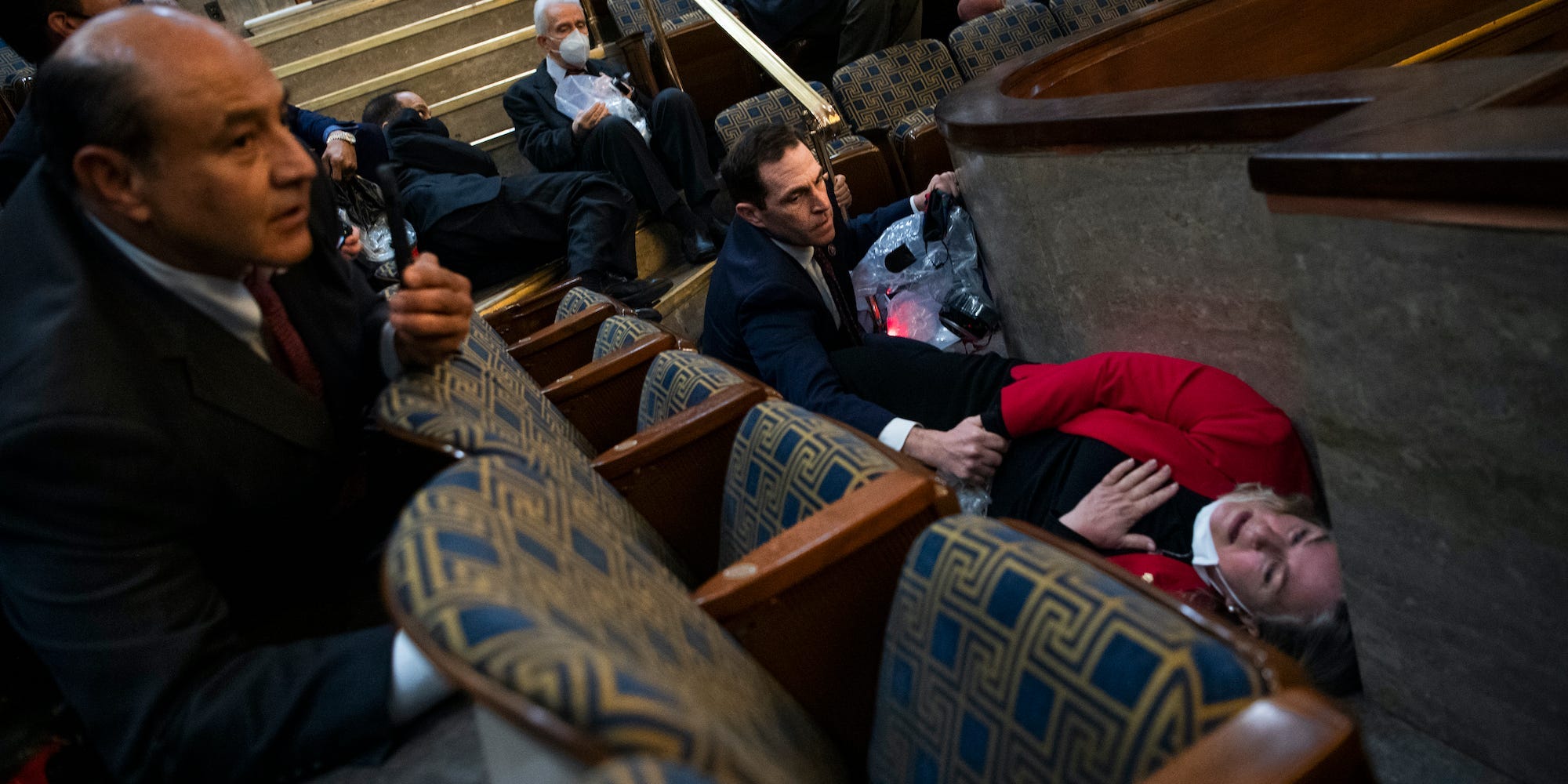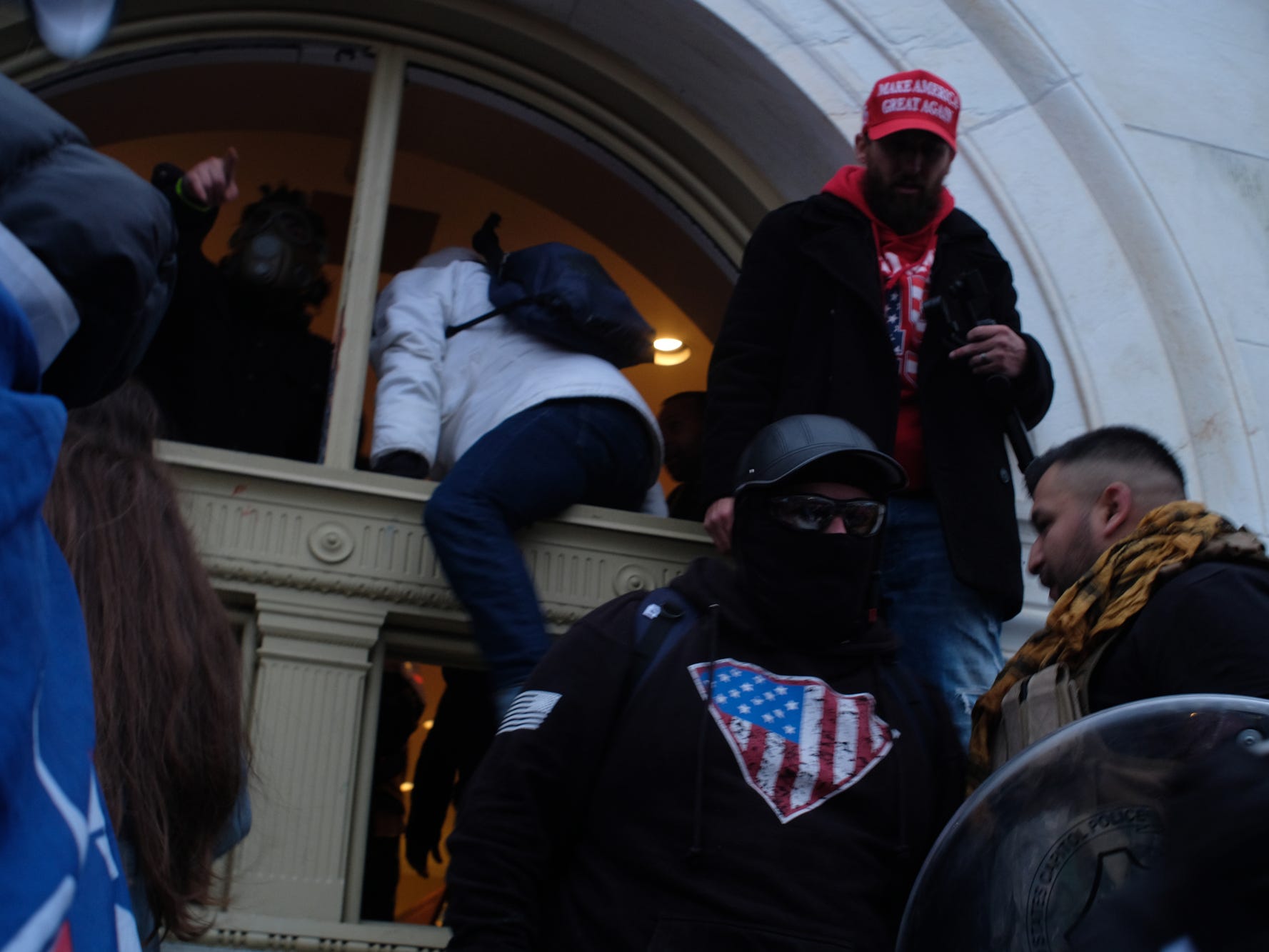
Alan Chin
- On January 6, congressional reporters and photojournalists found themselves in a melee.
- They had to report on a pro-Trump mob overtaking the Capitol while also trying to stay safe.
- 4 journalists share their stories as part of Insider's comprehensive oral history of January 6.
Journalism Rule No. 1: Don't become the story. Then came January 6, when the Capitol Hill press corps very much had to abandon that rule.
As a violent mob besieged Congress, reporters and photographers got caught between recording the unprecedented chaos and getting themselves to safety. Insider gathered those accounts as part of its comprehensive oral history of the events surrounding what's normally a pro forma ceremony to certify the winner of the last presidential election.
Perhaps no image became more famous or had more impact than Igor Bobic's video of Capitol Police officer Euguene Goodman leading the pro-Trump mob away from the Senate, where Vice President Mike Pence was in the midst of being evacuated.
"I remember having my phone out," Bobic, a HuffPost Congressional reporter, told Insider. "I knew I wasn't supposed to record in the hallways. There was a split second where I was like, 'Maybe I'll just have it on for photos.' I knew there was going to be something worth recording. But I didn't know what it was going to be. Then, just luckily enough, I ended up recording it. And it was how I got that video. And I'm really glad I did."
"Without it, Goodman's heroism might not have come to full light. How he pulled that crowd back up the other direction," Bobic said.
-Igor Bobic (@igorbobic) January 6, 2021
Longtime CQ Roll Call photojournalist Tom Williams told Insider that even though he encountered rioters and was warned several times by Capitol Police to take shelter, he still "wasn't actually that nervous."
"My big fear was maybe missing a picture," he said.
Williams famously documented what followed as Congress barricaded themselves inside the House chamber and struggled to put on gas masks. His singular focus led to a now-iconic series of images of the lawmakers in serious distress.
"In the chamber, when these people are smashing on the door, I was really concentrating on, you know, my shutter speed, getting the proper lens on, getting in some kind of position to shoot," Williams said. "My main fear is these guys are going to break in that chamber door. And the cops are gonna start shooting. And I'm going to be fiddling around with a gas mask. That was my fear."

Tom Williams/CQ-Roll Call, Inc via Getty Images
Katherine Tully-McManus, then a reporter for CQ Roll Call, was one of just a handful of journalists who joined US senators in their secure location after being evacuated to a secret location.
"There really was not a plan in place for how to handle the media. Literally, what do you do with the bodies in the balcony?," she told Insider of her escape from a locked-down Senate chamber. "That became my plan immediately. Being with the senators, wherever they were going to be, felt like the safest thing to do."
While following Senators, reporters encountered bewildered custodial workers who were unsure what was going on and where to hide.
"I was left telling people, 'Do you have a storage room with a lock? Do you have any space that you have access to that locks? We're going to a space. I think you can come with us. But if you're afraid of getting in trouble or whatever, just lock yourself behind a door. Bad people have made it into this building.'," Tully-McManus said.
Outside the Capitol building and in the midst of the January 6 mele, freelance photojournalist Alan Chin said he couldn't believe what he was seeing as a mob of armed rioters overtook the police.

"I've not seen anything like that in the United States," said Chin, who was on a freelance assignment for Insider. "In all these years of covering protests and demonstrations, I have never seen an American police force break and retreat back like that."
At some point, Chin said, he was surrounded by a group of Proud Boys who were "very hostile" and were demanding to know why he was taking photos. He knew he would not be able to escape if things got ugly.
"I never actually lie, but I deflect the question, so instead of explaining that I'm a professional photojournalist and on assignment, I just said 'No man, it's all right,'" Chin said. "I was basically kind of trying to play dumb a little bit... I was trying to be like a fraternity brother."
At some point, the mob turned their anger to other photojournalists and video journalists and destroyed their equipment.
Months later, the memories of barricading themselves behind doors or facing down rioters remain vivid and raw for the journalists who cover Congress. What was once considered one of the safest places to work in the country, no longer feels secure.
"Every time I walk down those steps I think about it," Bobic said. "Goodman's still there, on his post, every day, doing his job. And we lock eyes, and it brings me back to that moment. And I wish it didn't have to be like that."
Read the full oral history with accounts from 34 people here, and other related stories.
